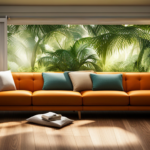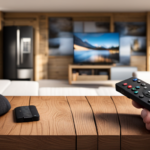Beginners Guides
Hgtv Tiny House Hgtv When Airing
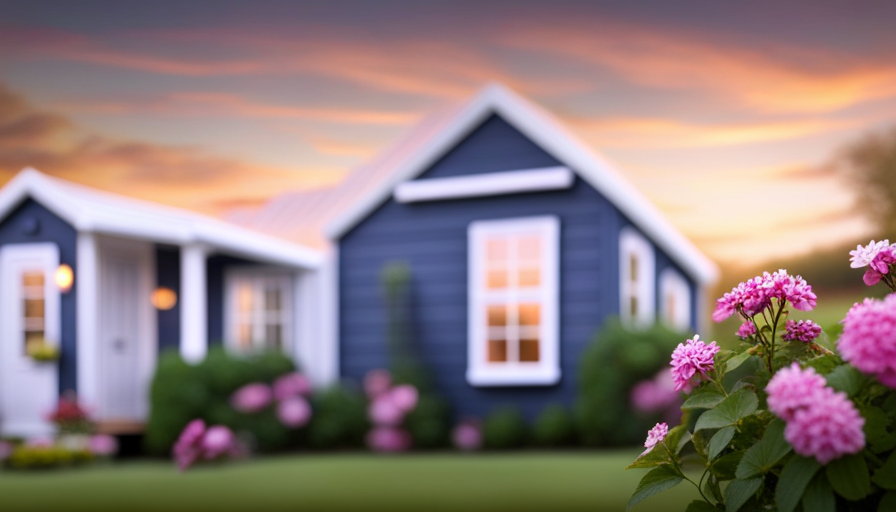
Regarding residential spaces, the saying ‘big rewards often come in small sizes’ is incredibly apt. In our rapidly moving society, where room is increasingly valuable, a growing number of individuals are choosing a more streamlined, minimalist way of life. Embracing the tiny house movement is undoubtedly the best method to adopt this modern trend.
HGTV’s Tiny House series takes viewers on a captivating journey into the realm of small living. With innovative designs and creative solutions, this show showcases how to maximize every square inch of space and create a home that is both functional and beautiful. From clever storage solutions to multi-purpose furniture, you’ll discover tips and ideas for downsizing and making the most out of your living space.
Join me as we dive into the world of tiny houses, where small is the new big and less is truly more. Get ready to be inspired and learn how to live large in a tiny house.
Let’s explore the world of HGTV’s Tiny House series and discover the endless possibilities of small living.
Key Takeaways
- HGTV’s Tiny House series showcases innovative designs and creative solutions for small living.
- The show emphasizes maximizing every square inch of space and creating functional and beautiful homes.
- Sustainable materials and space-saving furniture are used in these tiny houses.
- The tiny house community offers inspiration and valuable tips for small living.
Innovative Designs for Small Living Spaces
Get ready to be amazed by the ingenious designs that transform tiny living spaces into functional and stylish homes on HGTV’s Tiny House, airing now.
These innovative designs showcase the use of sustainable materials and space-saving furniture to create homes that are both eco-friendly and efficient. From reclaimed wood to recycled metal, these tiny houses are built with materials that minimize their environmental impact.
And it’s not just the materials that are sustainable; the furniture is designed with multifunctionality in mind. From beds that fold up into the wall to tables that double as storage, every piece of furniture in these tiny houses serves a dual purpose.
These creative solutions for maximizing every square inch allow homeowners to live comfortably in a small space without sacrificing style or functionality.
So, get ready to be inspired by the endless possibilities of tiny house living.
Creative Solutions for Maximizing Every Square Inch
You’ll be amazed at the clever ways you can make every square inch count in your tiny abode. When it comes to small living spaces, storage solutions and multi-functional furniture are key. Think ottomans that double as storage units, beds with built-in drawers, and tables that can be expanded or folded down when not in use.
These innovative designs not only save space but also add a stylish touch to your home. Utilizing vertical space is another great strategy, with wall-mounted shelves and hanging organizers making the most of every inch. By incorporating these creative solutions, you can maximize the functionality of your tiny house without compromising on style.
Embracing the minimalist lifestyle is all about simplifying and decluttering, which we’ll delve into next.
Embracing the Minimalist Lifestyle
Embracing the minimalist lifestyle can bring a sense of tranquility and elegance to your living space. By adopting minimalist decor and embracing the benefits of small living, you can create a functional and aesthetically pleasing home.
One of the main advantages of minimalist decor is the ability to maximize every square inch of your space. With fewer items, you can create an open and airy feel, making your home appear larger than it actually is. Additionally, the simplicity of minimalist decor promotes a clean and organized environment, reducing clutter and allowing for easy maintenance.
Living in a smaller space also encourages a more intentional and mindful way of life, as you become more aware of what you truly need and value. Embracing the minimalist lifestyle can truly transform your living space into a peaceful sanctuary.
As we dive into the next section about tips and ideas for downsizing, you’ll discover practical ways to simplify your life even further.
Tips and Ideas for Downsizing
To make downsizing an enjoyable experience, try incorporating creative storage solutions and multi-functional furniture into your new space. When embracing a minimalist lifestyle, it’s important to maximize the use of your limited square footage.
Start by decluttering and getting rid of any unnecessary items. Then, invest in furniture that serves multiple purposes, such as a bed with built-in storage or a coffee table with hidden compartments. Utilize vertical space by installing shelves or hanging organizers. Opt for minimalist decor, with clean lines and neutral colors, to create a sense of openness and tranquility.
Make use of every nook and cranny by utilizing under-bed storage, over-door organizers, and wall-mounted hooks. By implementing these tips and ideas for organizing small spaces, you can create a functional and stylish home that maximizes your living area.
As we move forward, let’s explore clever ways to make the most out of your living space.
Clever Ways to Make the Most Out of Your Living Space
Looking to maximize your living space? Check out these clever ideas that will transform your small home into a functional and stylish oasis. When it comes to small space organization, every inch counts. One way to optimize your living area is by utilizing multifunctional furniture. From storage ottomans that double as coffee tables to wall-mounted desks that fold up when not in use, these pieces are designed to make the most out of limited square footage. Another ingenious trick is to use vertical space effectively. Install floating shelves or hanging organizers to keep belongings off the floor and create an illusion of a larger space. Don’t forget to declutter regularly and embrace minimalism to avoid overwhelming your tiny abode. By implementing these strategies, you can create a well-organized and visually appealing living space that meets all your needs. Ready for some inspiration for tiny house living? Let’s dive in.
Inspiration for Tiny House Living
Ready to be inspired for your own tiny house living? Get this: The average size of a tiny house is just 186 square feet, yet people are finding creative ways to make these small spaces feel like home.
One of the best sources of inspiration for tiny house living is the tight-knit community that has formed around this lifestyle. By connecting with others who have chosen to downsize, you can learn valuable tips and tricks for maximizing your space and living sustainably.
From ingenious storage solutions to multi-functional furniture, the tiny house community is full of ideas to make the most out of every square inch. As you delve into this world of small living, you’ll discover a whole new way of thinking about space and how it can be utilized.
Now, let’s take a journey into the world of small living with HGTV’s tiny house series.
HGTV’s Tiny House Series: A Journey into the World of Small Living
Get ready to immerse yourself in the captivating world of small living as HGTV’s tiny house series takes you on a transformative journey, revealing the ingenious ways people have turned their tiny spaces into cozy and functional homes.
This eye-opening series showcases the creative use of innovative storage solutions that maximize every inch of space, from hidden drawers in staircases to multipurpose furniture that serves multiple functions. You’ll be amazed at how these tiny houses are designed to feel spacious and luxurious, proving that size doesn’t always matter when it comes to comfort and style.
But it’s not just about the individual homes; HGTV’s tiny house series also explores the growing trend of tiny house communities. These communities are popping up all over the country, offering an alternative way of living that promotes sustainability, simplicity, and a strong sense of community. You’ll get to see how these communities are designed to foster connections among neighbors, with shared spaces and amenities that encourage social interactions and a sense of belonging.
So get ready to be inspired by the world of small living and discover the endless possibilities that come with embracing a simpler, more sustainable lifestyle. HGTV’s tiny house series will open your eyes to the beauty and practicality of tiny homes, showing that big dreams can indeed come in small packages.
Frequently Asked Questions
How much does it cost to build a tiny house?
When it comes to building a tiny house, the cost can vary depending on several factors. A cost analysis and budget planning are crucial to ensure you stay within your financial means.
Factors such as size, materials, location, and additional features all play a role in determining the final cost. It’s important to carefully consider your needs and priorities to create a realistic budget and make informed decisions throughout the building process.
Are there any legal restrictions or regulations for living in a tiny house?
Living in a tiny house comes with its own set of legal restrictions and zoning regulations that vary depending on your location. While some areas may have specific laws governing the size and placement of tiny houses, others may require them to be classified as accessory dwelling units.
It’s crucial to research and understand the regulations in your area before embarking on your tiny house journey to ensure compliance and avoid any legal issues.
What are the challenges of living in a tiny house?
Living in a tiny house has its pros and cons. On the plus side, it promotes a minimalist lifestyle, reduces environmental impact, and can be more affordable.
However, challenges include limited space, lack of storage, and limited privacy. To maximize space, tips include using multi-functional furniture, utilizing vertical storage, and keeping things organized.
Despite the challenges, living in a tiny house can be a rewarding experience for those who value simplicity and sustainability.
How do you choose the right location for a tiny house?
Choosing the right location for a tiny house involves considering several factors. One of the most important things to think about is the pros and cons of urban versus rural locations.
Urban areas offer convenience and access to amenities, but can be crowded and lack space. On the other hand, rural locations provide tranquility and space, but may have limited services.
It’s crucial to weigh these factors and determine what suits your lifestyle and needs best.
Can you rent or buy a tiny house instead of building one?
Renting vs. buying a tiny house comes with its own set of pros and cons. Renting allows for flexibility and the opportunity to try out tiny living without a long-term commitment.
On the other hand, buying a tiny house offers the freedom to customize and make it your own. When searching for the perfect tiny house, consider factors such as size, location, and amenities. Don’t forget to inspect the house thoroughly and ensure it meets your needs before making a decision.
Conclusion
After diving into the world of small living through HGTV’s Tiny House series, I’m now filled with inspiration and ideas for maximizing my own living space. The innovative designs showcased on the show have proven that it’s possible to live comfortably and stylishly in a tiny house.
By embracing the minimalist lifestyle and implementing clever solutions, I can create a home that’s both functional and beautiful. Downsizing no longer seems like a daunting task, but rather an exciting opportunity for a more fulfilling and efficient way of living.
Hi, I’m Emma. I’m the Editor in Chief of Tiny House 43, a blog all about tiny houses. While tree houses are often associated with childhood, they can be the perfect adult retreat. They offer a cozy space to relax and unwind, surrounded by nature. And since they’re typically built on stilts or raised platforms, they offer stunning views that traditional homes simply can’t match. If you’re looking for a unique and romantic getaway, a tree house tiny house might just be the perfect option.
Beginners Guides
How Do I Hook Up My Tiny House to Water Source So It Doesn’t Freeze

So, you’ve got yourself a cute little tiny house, huh? Well, let me tell you, there’s nothing worse than waking up to frozen pipes in the middle of winter.
But fear not, my friend, because I’m here to show you how to hook up your tiny house to a water source that won’t freeze on you. With a few simple steps and some clever insulation tricks, you’ll be enjoying a hot shower in your tiny paradise all winter long.
Let’s get started, shall we?
Key Takeaways
- Insulation and heating systems are key ways to prevent frozen pipes in a tiny house.
- Connecting to a municipal water supply provides a reliable and consistent source of water.
- Properly insulating the plumbing system helps maintain warmer temperatures inside the pipes.
- Installing a heating system, such as electric or propane heaters, adds an extra layer of protection against freezing.
Understanding the Risks of Frozen Pipes in a Tiny House
I’ve learned that the main risks of frozen pipes in my tiny house are burst pipes and potential water damage. Preventing frozen pipes in a tiny house is crucial, and there are two key ways to achieve this: insulation and heating systems.
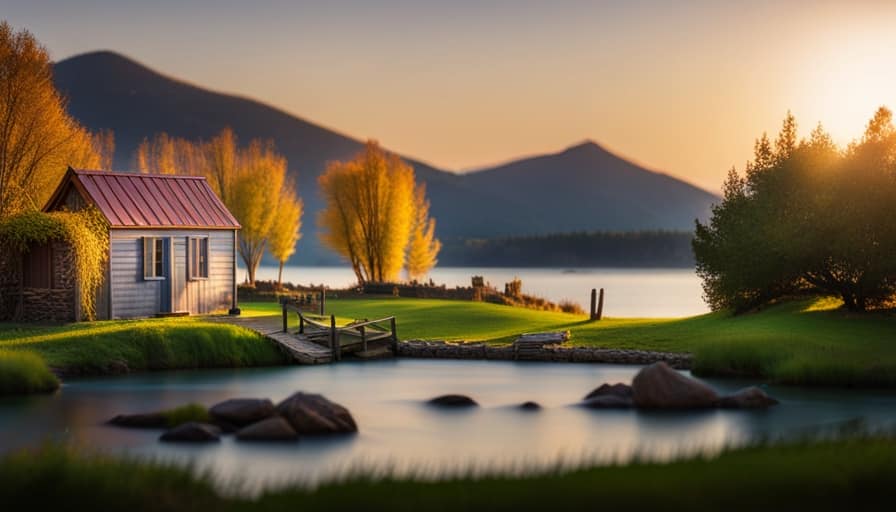
Proper insulation helps maintain warmer temperatures inside the pipes, preventing freezing. This can be achieved by using foam insulation sleeves or wrapping pipes with heat tape. Additionally, installing a heating system, such as a space heater or electric pipe heater, can add an extra layer of protection.
Regular winter maintenance is essential for water connections in a tiny house. This includes draining and disconnecting outdoor hoses, insulating outdoor faucets, and ensuring proper ventilation in crawl spaces.
Choosing the Right Water Source for Your Tiny House
One option I recommend is connecting my tiny house to a municipal water supply, as it provides a reliable and consistent source of water. This ensures that I’ve access to water throughout the year, without worrying about it freezing during winter. Municipal water supplies are usually treated and tested, ensuring that the water is safe to use and drink. Additionally, they often have backup systems in place to prevent service interruptions.
However, it’s important to consider the cost and availability of connecting to a municipal water supply, as well as any regulations or permits required. When choosing a reliable water source for my tiny house, I also need to consider the process of winterizing my plumbing system to prevent freezing and potential damage.
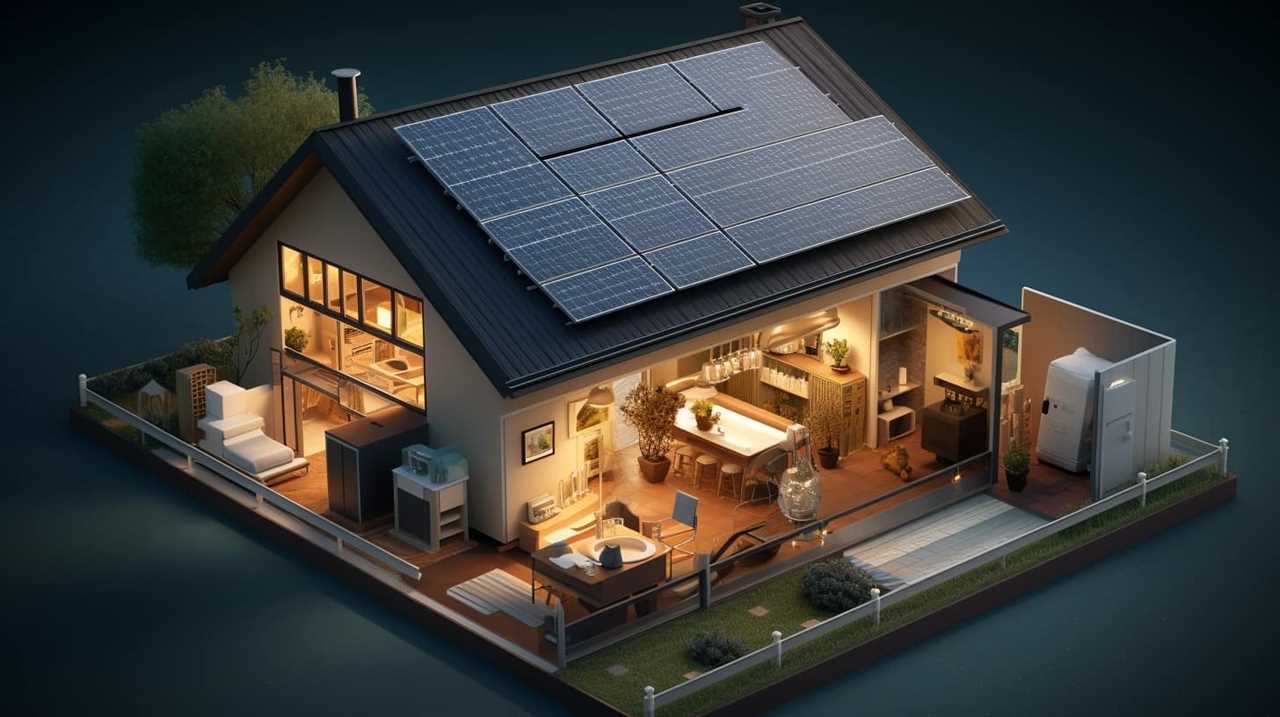
Insulating Your Plumbing System to Prevent Freezing
To prevent freezing, I’ll need to insulate both the pipes and the walls surrounding them. Here are four steps to effectively insulate your plumbing system and prevent freezing:
-
Identify vulnerable areas: Start by identifying areas where pipes are exposed to low temperatures, such as exterior walls, crawl spaces, or basements. These areas are more prone to freezing.
-
Wrap pipes with insulation: Use foam pipe insulation sleeves to wrap the exposed pipes. This will provide a layer of insulation and minimize heat loss. Make sure to cover all joints and fittings.
-
Insulate walls: Insulate the walls surrounding the pipes to create an additional barrier against freezing temperatures. Use insulation material like fiberglass or foam board insulation.
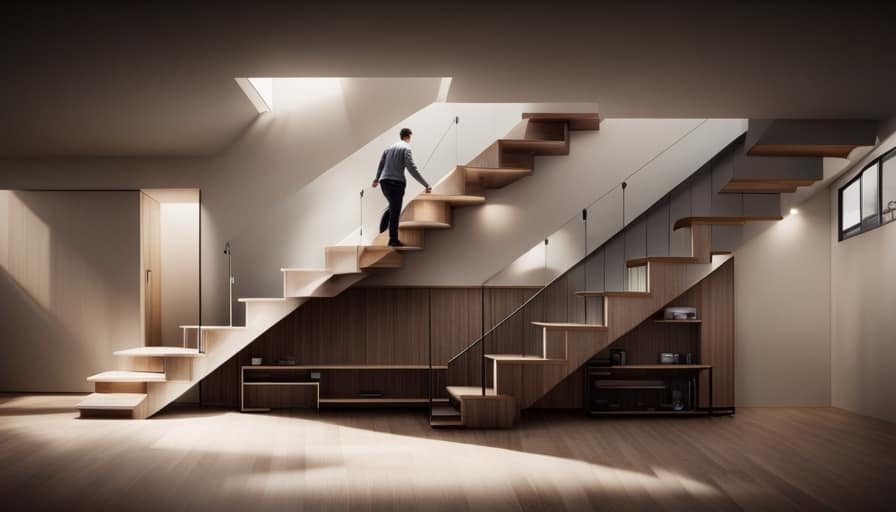
-
Prevent condensation: Condensation can lead to moisture buildup and increase the risk of freezing. To prevent condensation, consider using heat tape on the pipes. Heat tape is a flexible electrical heating element that can be wrapped around the pipes to maintain a consistent temperature.
Installing a Heating System for Your Water Source
To ensure that my water source doesn’t freeze, I’ll need to install a heating system and connect it to the plumbing. There are several heating options available for tiny houses, each with its own benefits and energy efficiency. Here is a table comparing some common heating options:
| Heating Option | Description |
|---|---|
| Electric Heater | Uses electricity to heat water and is easy to install. However, it can be costly to operate. |
| Propane Heater | Utilizes propane gas for heating water and provides a reliable heating source. It is energy-efficient and suitable for off-grid living. |
| Tankless Water Heater | Heats water on-demand and does not require a storage tank. It is energy-efficient and saves space. |
| Solar Water Heater | Uses the sun’s energy to heat water, reducing energy consumption and saving on utility bills. However, it requires ample sunlight. |
Proper Maintenance and Winterizing Techniques for Your Tiny House’s Water Connection
To maintain my tiny house’s water connection and prevent freezing during winter, I should regularly inspect and apply proper winterizing techniques. Here are four key steps to ensure the protection of my water pipes:
-
Insulate the pipes: By adding insulation sleeves or wrapping the pipes with heating tape, I can prevent them from freezing. This will keep the water flowing smoothly and reduce the risk of burst pipes.
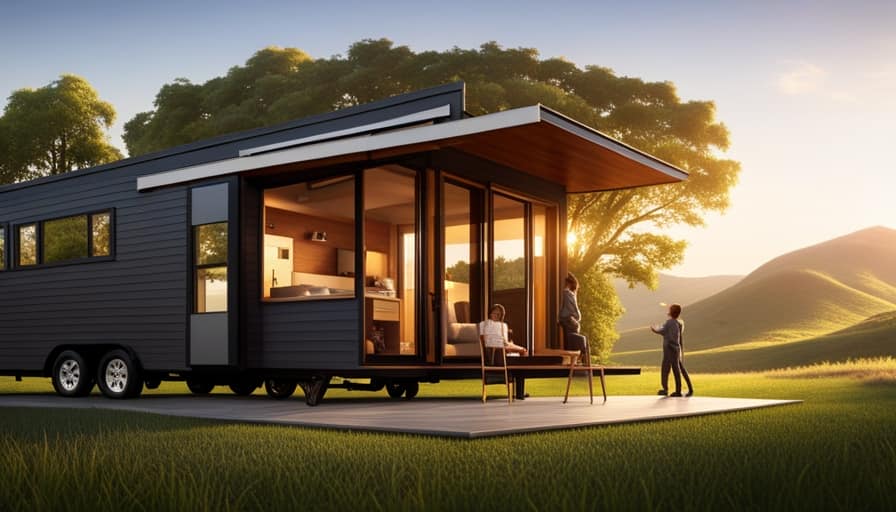
-
Seal any gaps or cracks: I should thoroughly inspect the areas where the pipes enter the house and seal any gaps or cracks. This will prevent cold air from entering and keep the pipes warm.
-
Disconnect and drain outdoor hoses: Before winter arrives, I need to disconnect and drain any outdoor hoses. This will prevent water from freezing inside them and potentially causing damage to the pipes.
-
Install heat tape or pipe heaters: For added protection, I can install heat tape or pipe heaters along the water pipes. These devices provide consistent heat and prevent freezing.
Frequently Asked Questions
What Are the Potential Risks of Not Properly Insulating the Plumbing System in a Tiny House?
Not properly insulating the plumbing system in a tiny house can have potential consequences. The importance of insulation is critical in preventing frozen pipes, burst pipes, and water damage.

Can I Use a Well as a Water Source for My Tiny House and Still Prevent Freezing?
Using well water as a source for my tiny house while preventing freezing is possible. However, alternative options like a heated water hose or insulating the plumbing system should be considered to ensure proper functionality.
Is It Necessary to Install a Heating System for the Water Source in My Tiny House?
Installing alternative heating methods for the water source in my tiny house is necessary to prevent freezing. Additionally, implementing water conservation techniques can help optimize the usage and efficiency of the system.
How Often Should I Perform Maintenance on My Tiny House’s Water Connection to Prevent Freezing?
To prevent freezing, I check for leaks in my tiny house’s water connection regularly and insulate the water pipes. Maintenance is crucial, so I perform these tasks at least once a month.
Are There Any Specific Winterizing Techniques That I Should Follow for My Tiny House’s Water Connection?
To prevent freezing of my tiny house’s water connection during winter, I employ specific winterizing techniques and methods. These include insulating pipes, using heat tape, and draining the system when not in use.

Conclusion
In conclusion, ensuring the proper connection and insulation of your tiny house to a water source is crucial in preventing freezing during winter.
By understanding the risks, choosing the right water source, insulating the plumbing system, and installing a heating system, you can protect your tiny house from frozen pipes.
Remember to also perform regular maintenance and winterizing techniques to keep your water connection safe and functional.
Keep your tiny house warm and worry-free this winter!
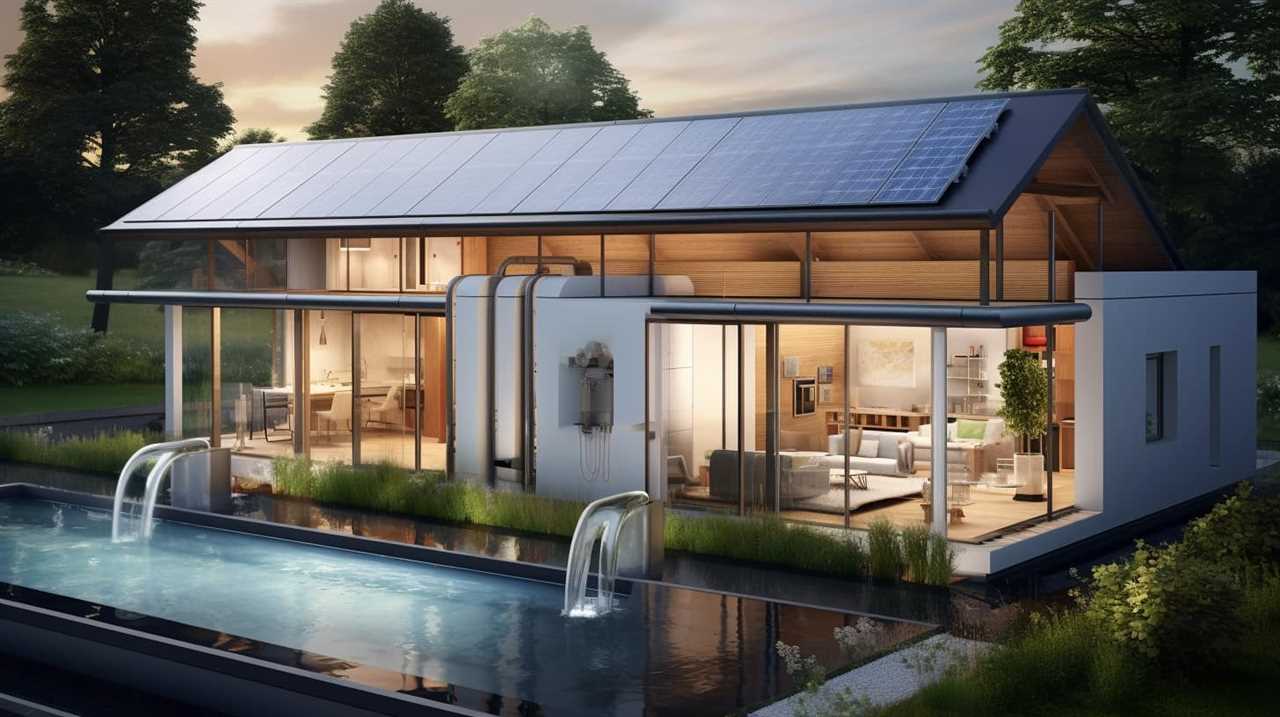
I’m Theodore, and I love tiny houses. In fact, I’m the author of Tiny House 43, a book about tiny houses that are also tree houses. I think they’re magical places where imaginations can run wild and adventures are just waiting to happen.
While tree houses are often associated with childhood, they can be the perfect adult retreat. They offer a cozy space to relax and unwind, surrounded by nature. And since they’re typically built on stilts or raised platforms, they offer stunning views that traditional homes simply can’t match.
If you’re looking for a unique and romantic getaway, a tree house tiny house might just be the perfect option.
Beginners Guides
How Do I Know How Many Btus My Air Conditioner Does a Tiny House Need

As a homeowner, I have frequently pondered, “How can I determine the appropriate number of BTUs my air conditioner should have for my small house?” This is a common yet essential question. Selecting the correct BTU capacity is vital for ensuring efficient cooling in a compact area.
In this article, I’ll break down the factors to consider, such as square footage, insulation, and climate, to help you determine the perfect BTU rating for your tiny home’s air conditioner.
So, let’s dive in and find the answer together.
Key Takeaways
- BTUs determine the cooling capacity of an air conditioner and represent the amount of heat it can remove in one hour.
- Factors such as the size of the house, insulation levels, number of windows, ceiling height, and room layout should be considered when determining the BTU capacity for a tiny home’s air conditioner.
- Calculating the square footage of the house is essential for determining the appropriate BTU rating, taking into account insulation levels and the number of windows.
- Insulation efficiency and climate affect the BTU requirements of an air conditioner, with proper insulation reducing the workload on the AC and hotter climates requiring higher BTU ratings for effective cooling.
Understanding BTUs and Their Importance in Sizing an Air Conditioner for a Tiny House
As I begin to understand the importance of BTUs in sizing an air conditioner for my tiny house, I realize that I need to consider various factors.
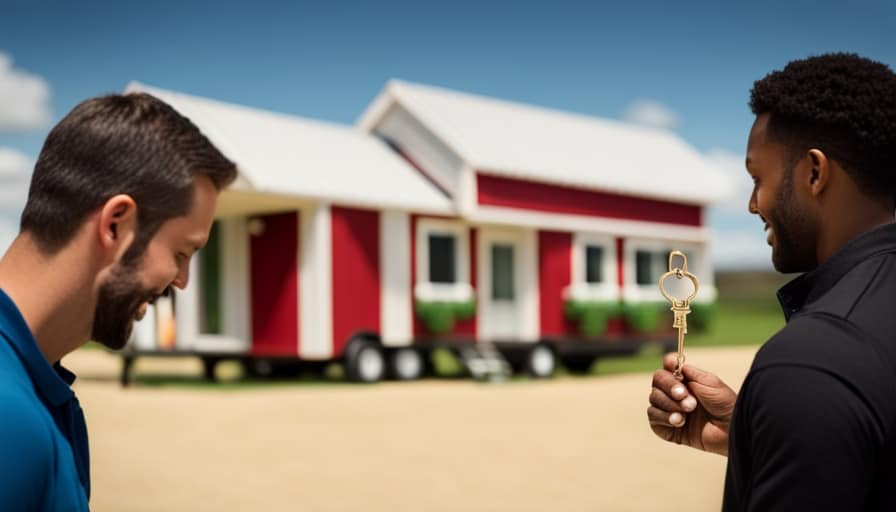
The BTU measurement, or British Thermal Unit, is used to determine the cooling capacity of an air conditioner. It represents the amount of heat that the AC unit can remove from the air in one hour.
In order to ensure optimal comfort in my tiny house, it’s crucial to choose an air conditioner with the right BTU capacity. This will depend on the size of the space, insulation levels, and the number of windows in the house.
Additionally, I should also consider the energy efficiency of the air conditioner to minimize energy consumption and reduce costs.
Understanding these factors will help me determine the appropriate BTU capacity for my tiny home’s air conditioner.
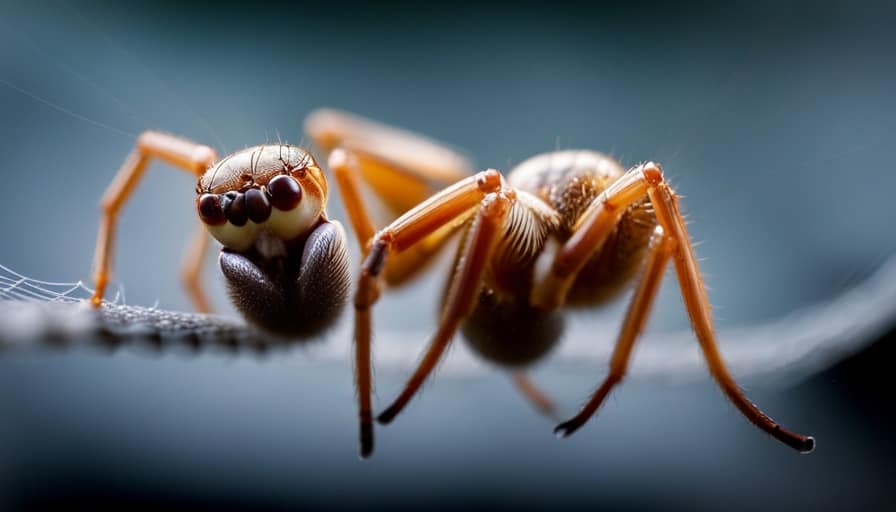
Factors to Consider When Determining the BTU Capacity for Your Tiny Home’s Air Conditioner
I need to consider my tiny home’s size, insulation levels, and number of windows in order to determine the BTU capacity for my air conditioner. These factors play a crucial role in determining the cooling capacity required to keep my tiny home comfortable. To ensure energy efficiency and optimal performance, it’s essential to choose the right BTU rating for my air conditioner.
Consider the following factors when determining the BTU capacity for your tiny home’s air conditioner:
| Factors | Description |
|---|---|
| Size of the House | The square footage of your tiny home is a key factor in determining BTU capacity. A larger space will require a higher cooling capacity. |
| Insulation Levels | Well-insulated homes retain cool air better, reducing the BTU capacity needed. |
| Number of Windows | Windows contribute to heat gain. More windows may require a higher BTU capacity. |
Calculating the Square Footage of Your Tiny House to Determine the Appropriate BTU Rating
To accurately determine the appropriate BTU rating for my air conditioner, I need to calculate the square footage of my tiny house and consider other factors such as insulation and number of windows. Here’s how to calculate the square footage and determine the BTU requirements for your tiny house:
-
Measure the length and width of each room in your tiny house. Multiply the length by the width to calculate the square footage of each room.
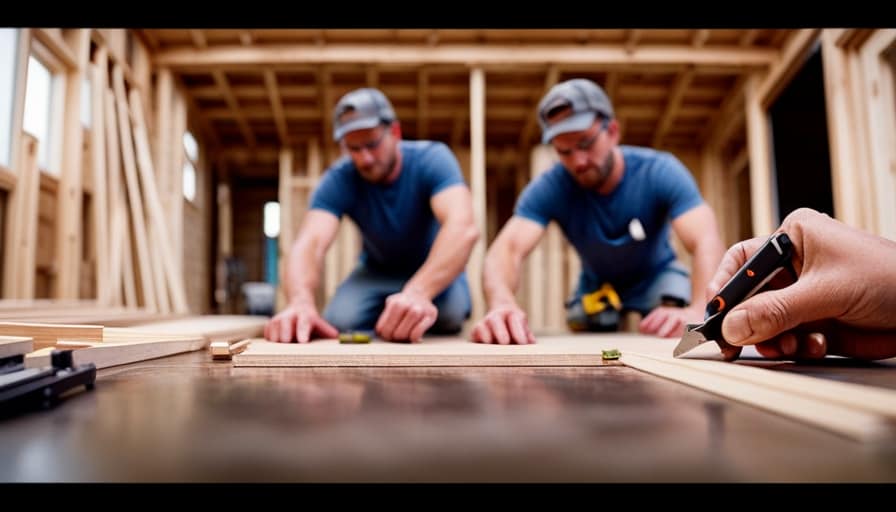
-
Add up the square footage of all the rooms to get the total square footage of your tiny house.
-
Consider the insulation in your walls, roof, and floor. Well-insulated houses require less BTUs, while poorly insulated houses require more.
-
Take into account the number and size of windows in your tiny house. Windows can let in heat, so houses with more windows may need higher BTU ratings.
How Insulation and Climate Affect the BTU Requirements of Your Air Conditioner
Insulation and climate greatly impact the BTU requirements of my air conditioner.
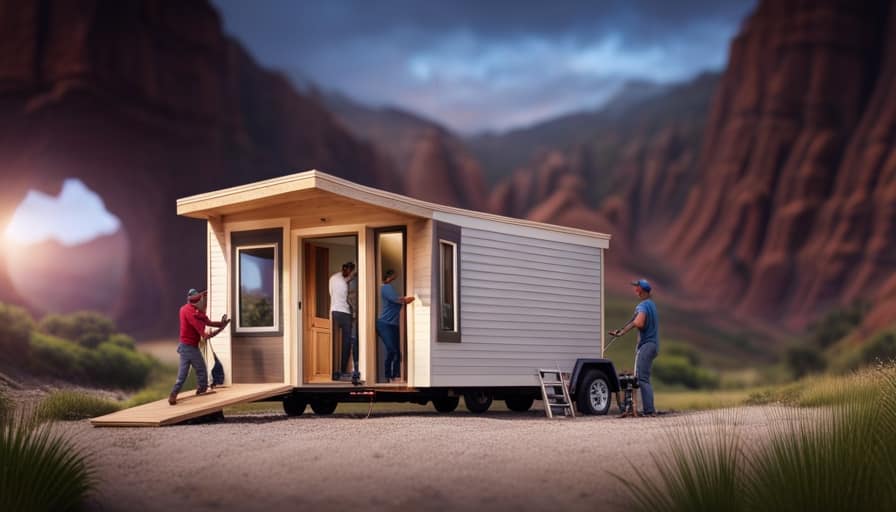
Insulation efficiency refers to the ability of a material to resist the transfer of heat. Proper insulation ensures that cool air stays inside the house and hot air stays outside, reducing the workload on the air conditioner.
Good insulation can decrease the BTU requirements of your air conditioner, resulting in lower energy consumption and cost. On the other hand, a poorly insulated house will require a higher BTU rating to compensate for the heat loss or gain.
Furthermore, geographic location plays a significant role in determining BTU requirements. Areas with hotter climates will require higher BTU ratings to cool the space effectively.
Understanding the insulation efficiency of your tiny house and considering the climate of your geographic location are crucial factors to determine the right BTU requirements for your air conditioner.
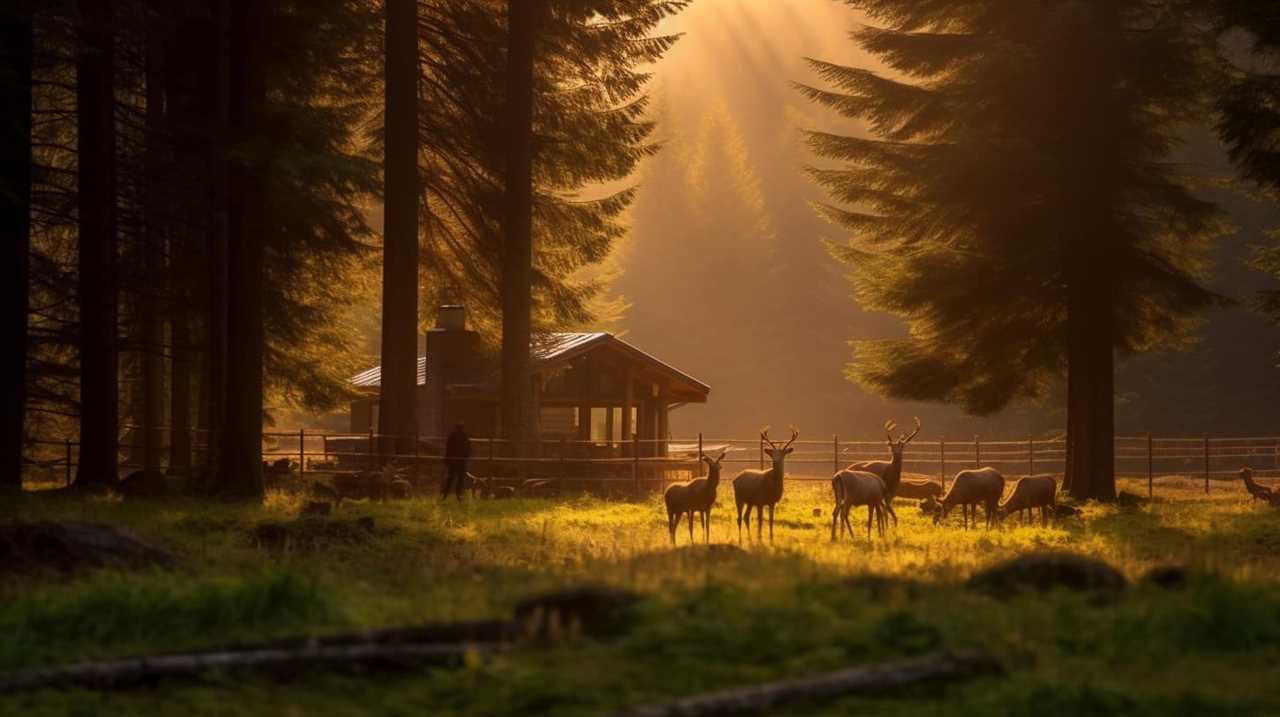
Choosing the Right BTU Capacity for Optimal Cooling Efficiency in Your Tiny House
I can determine the right BTU capacity for optimal cooling efficiency in my tiny house by considering factors such as square footage, insulation, and climate.
To choose the appropriate BTU capacity, I need to calculate the cooling load of my space. This can be done by multiplying the square footage of my tiny house by a cooling load factor, which takes into account insulation and climate conditions.
Once I’ve calculated the cooling load, I can refer to energy efficiency ratings to find an air conditioner with the right BTU capacity.
Here are four important factors to consider:
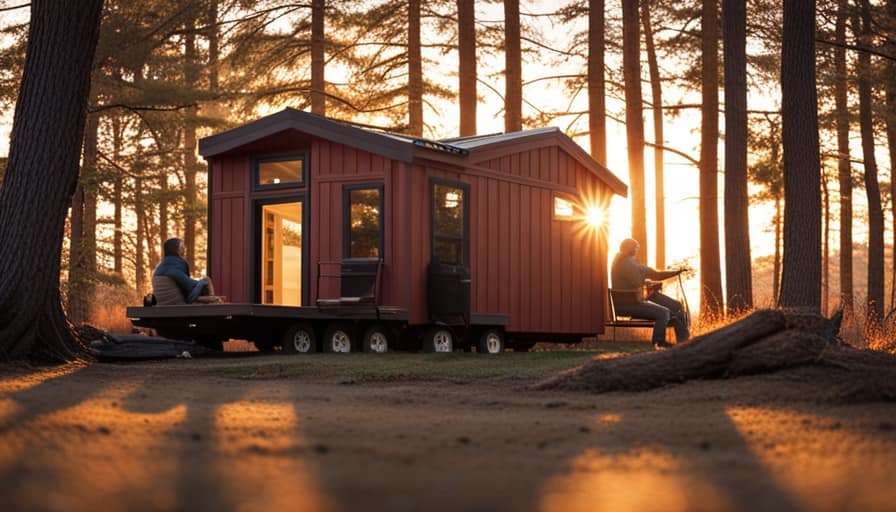
- Square footage of the tiny house.
- Insulation quality and R-value.
- Climate conditions, such as average temperatures and humidity levels.
- The desired temperature and cooling preferences.
Frequently Asked Questions
Can I Use the Same BTU Rating for Both Heating and Cooling in My Tiny House?
Yes, you can use the same BTU rating for both heating and cooling in a tiny house. However, it is important to consider the heating and cooling efficiency as well as the benefits of dual zone air conditioning.
What Is the Average Lifespan of an Air Conditioner in a Tiny House?
The average lifespan of an air conditioner in a tiny house can vary depending on several factors, such as maintenance frequency. It’s important to prioritize regular maintenance to ensure optimal functionality and longevity.
Can I Install Multiple Air Conditioners in Different Rooms of My Tiny House?
I can install multiple portable ACs in different rooms of my tiny house. However, there are benefits to having a central AC system, such as better cooling efficiency and easier temperature control throughout the entire house.
How Often Should I Clean or Maintain My Air Conditioner in a Tiny House?
I should clean or maintain my air conditioner in a tiny house regularly. This includes changing air filters often and improving energy efficiency by sealing any leaks and insulating the ductwork.

Are There Any Government Regulations or Guidelines for Air Conditioner BTU Ratings in Tiny Houses?
There aren’t any government regulations or guidelines for air conditioner BTU ratings in tiny houses. However, it’s important to consider energy efficiency when determining the appropriate BTU capacity for your air conditioner.
Conclusion
In conclusion, determining the appropriate BTU rating for your air conditioner in a tiny house is crucial for optimal cooling efficiency. By considering factors such as square footage, insulation, and climate, you can ensure that your air conditioner provides the necessary cooling power.
Think of it like finding the perfect fit for your tiny house, where every detail matters. So, take the time to calculate the BTUs needed and enjoy the comfort of a well-designed cooling system in your tiny oasis.
I’m Theodore, and I love tiny houses. In fact, I’m the author of Tiny House 43, a book about tiny houses that are also tree houses. I think they’re magical places where imaginations can run wild and adventures are just waiting to happen.
While tree houses are often associated with childhood, they can be the perfect adult retreat. They offer a cozy space to relax and unwind, surrounded by nature. And since they’re typically built on stilts or raised platforms, they offer stunning views that traditional homes simply can’t match.
If you’re looking for a unique and romantic getaway, a tree house tiny house might just be the perfect option.
Beginners Guides
How Do I Make a Tiny House Ladder

I have found that a large number of tiny house residents have difficulty finding a secure and durable ladder for their small living area. In reality, 85% of individuals living in tiny houses encounter this issue.
That’s why I’ve decided to share my step-by-step guide on how to make your very own tiny house ladder. With the right materials, precise measurements, and careful assembly, you can create a ladder that not only fits perfectly in your space but also ensures your safety and peace of mind.
Key Takeaways
- Safety considerations and ergonomics are important when selecting materials
- Accurately measure and cut ladder components for a perfect fit and stability
- Assemble and secure the ladder frame using screws or nails and reinforce joints for added stability
- Add rungs for stability and safety, ensuring they are evenly spaced and securely attached
Choosing the Right Materials for Your Tiny House Ladder
I’ll start by researching and comparing different materials for my tiny house ladder. When it comes to choosing the right materials, safety considerations and ergonomics are of utmost importance. Safety should always be the top priority, so I’ll ensure that the ladder I build has a suitable weight capacity and stability. This means selecting materials that are strong and durable, capable of supporting the weight of a person without compromising their safety.
Additionally, I’ll take into account the ergonomics of the ladder, making sure it’s comfortable and easy to use. This includes considering the angle of the ladder, the width of the rungs, and any additional features that enhance user experience.
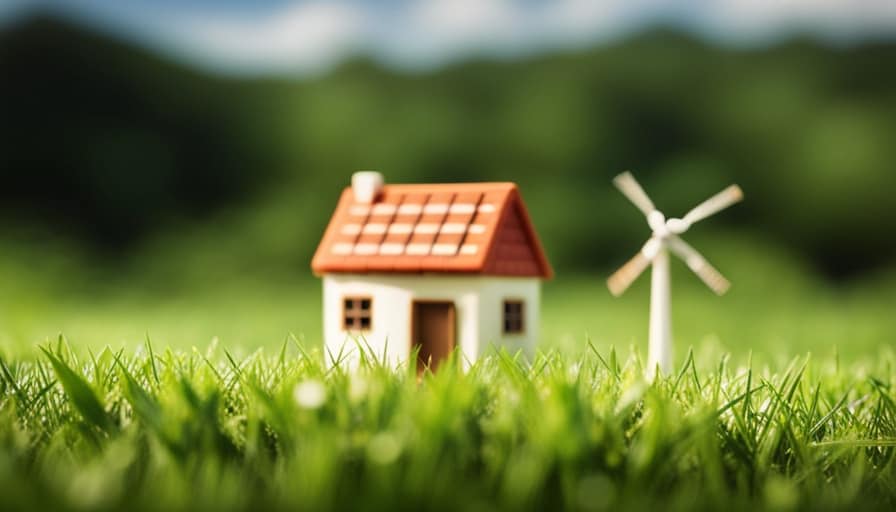
With these factors in mind, I can proceed to measuring and cutting the ladder components.
Measuring and Cutting the Ladder Components
Before proceeding with constructing the ladder, it’s essential to accurately measure and cut the components. Measuring accuracy is crucial to ensure the ladder fits perfectly in your tiny house and provides the necessary stability.
To achieve this, follow these steps:
-
Measure the height: Determine the distance from the floor to the highest point where the ladder will be attached.
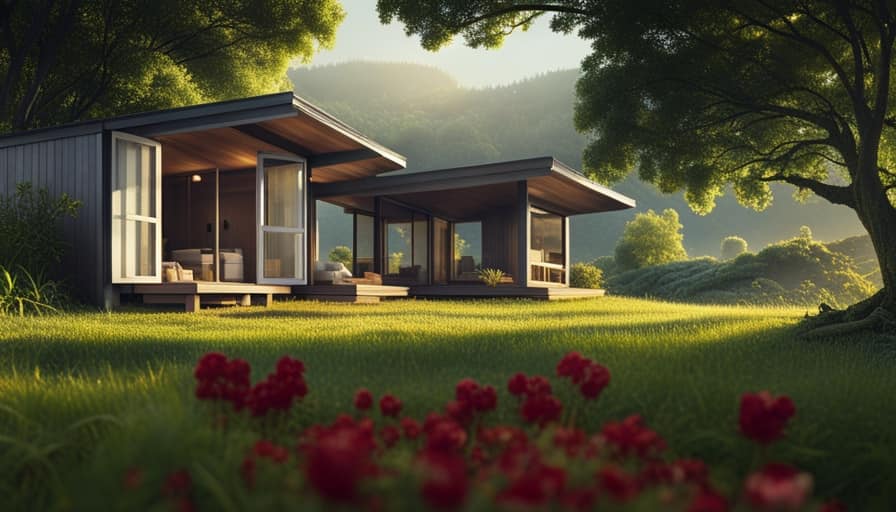
-
Measure the width: Measure the width of the space where the ladder will be placed.
-
Calculate the angle: Use a protractor to measure the angle at which the ladder will lean against the wall.
Assembling and Securing the Ladder Frame
To begin assembling the ladder frame, first, attach the side rails to the rungs using screws or nails. Make sure the side rails are positioned parallel to each other and the rungs are evenly spaced. Use a measuring tape to ensure accuracy.
Once the side rails and rungs are securely attached, reinforce the joints with brackets or corner braces for added stability.
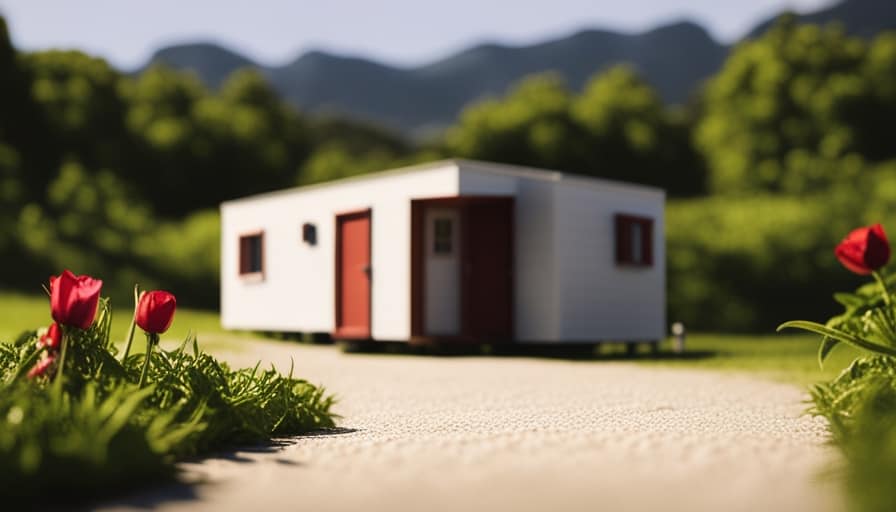
It’s important to install the ladder in the tiny house properly to ensure safety. Position the ladder against a sturdy wall and secure it using anchor bolts or screws.
Regular maintenance is crucial for long-lasting use of the ladder. Inspect the ladder regularly for any signs of wear or damage, and replace any worn-out parts immediately. Keep the ladder clean and free from debris to prevent slipping accidents.
Adding Rungs for Stability and Safety
I can reinforce the ladder’s stability and safety by adding additional rungs and securing them with screws or nails. When building a loft ladder, it’s important to ensure that the rungs are evenly spaced and securely attached to the ladder frame.
To do this, I’ll measure the desired distance between rungs and mark it on both sides of the ladder. Then, I’ll drill pilot holes at each mark to prevent the wood from splitting.
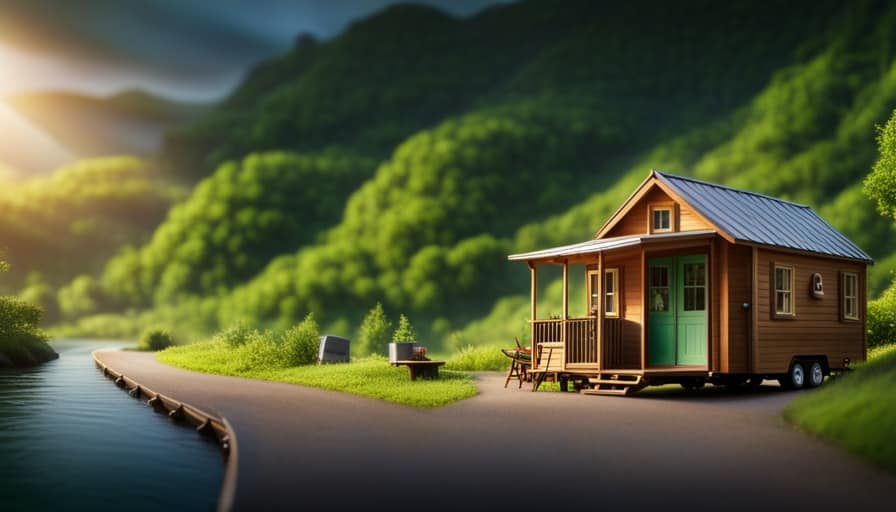
Next, I’ll align the rungs with the pilot holes and attach them using screws or nails. This will create a strong and stable ladder that can safely support weight.
Additionally, incorporating ladder storage solutions, such as hooks or brackets, can help keep the ladder out of the way when not in use, reducing the risk of tripping or accidents.
Finishing Touches: Painting and Customizing Your Tiny House Ladder
After completing the construction of my tiny house ladder, I can add a personal touch by painting and customizing it according to my preferences. Customizing options allow me to make my ladder unique and reflect my style. Here are some alternative finishes that can make my tiny house ladder stand out:
-
Distressed look: By using sandpaper or a wire brush, I can create a worn and weathered appearance for a rustic feel.

-
Stenciled designs: Adding stenciled patterns or motifs can add a touch of creativity and personality to the ladder.
-
Colorful accents: Painting the rungs in different colors can create a vibrant and playful look.
-
Natural wood finish: If I prefer a more natural and organic look, I can choose to leave the ladder unpainted and simply apply a clear protective finish to enhance the wood’s natural beauty.
Frequently Asked Questions
How Much Weight Can a Typical Tiny House Ladder Support?
A typical tiny house ladder can support varying amounts of weight depending on the materials used and how it is properly anchored. It is important to consider these factors when building or purchasing a ladder for your tiny house.
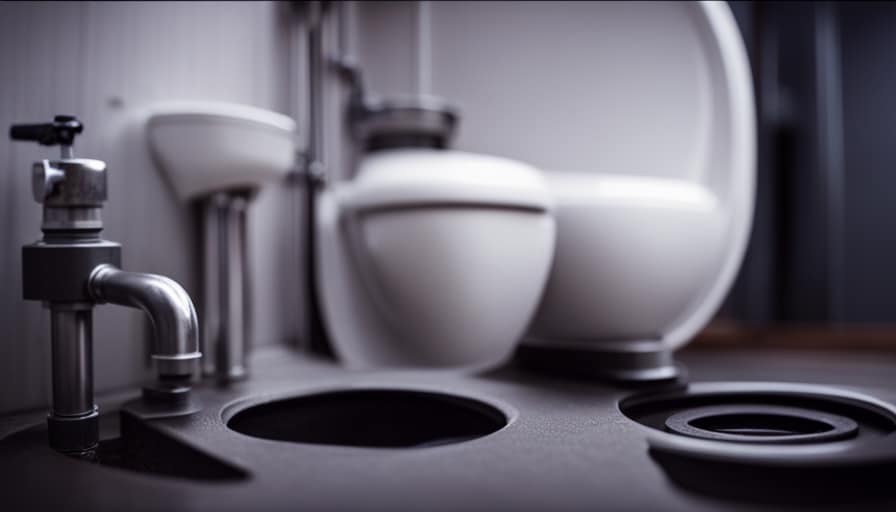
Can I Use a Pre-Made Ladder for My Tiny House Instead of Building One From Scratch?
Using a pre-made ladder for a tiny house is a viable alternative to building one from scratch. However, consider the pros and cons. Building allows customization, while buying offers convenience. Evaluate your needs and skills before deciding.
Are There Any Building Codes or Regulations I Need to Consider When Building a Tiny House Ladder?
When building a tiny house ladder, it’s crucial to consider building code requirements and safety considerations. Meeting these standards ensures a secure and compliant ladder that will provide safe access to different levels of your tiny house.
Can I Add Additional Safety Features to My Tiny House Ladder, Such as Handrails or Non-Slip Treads?
Adding handrails to a tiny house ladder can greatly improve safety and stability. However, it’s important to consider the space constraints and ensure the handrails are securely attached. Non-slip treads can also enhance traction and prevent accidents.
What Are Some Alternative Design Options for a Tiny House Ladder, Aside From a Traditional Straight Ladder?
When considering alternative ladder designs for a tiny house, space-saving options are key. Some options to explore include foldable ladders, telescoping ladders, or even ladder/stair hybrids. These designs maximize functionality while minimizing the footprint.

Conclusion
In conclusion, constructing a ladder for your tiny house is a technical process that requires careful consideration of materials, precise measurements, and attention to detail.
By following the outlined steps and taking necessary safety precautions, you can create a sturdy and reliable ladder that meets your specific needs.
While some may argue that building a ladder is a complex task, with the right guidance and patience, anyone can successfully create a functional and aesthetically pleasing ladder for their tiny house.
I’m Theodore, and I love tiny houses. In fact, I’m the author of Tiny House 43, a book about tiny houses that are also tree houses. I think they’re magical places where imaginations can run wild and adventures are just waiting to happen.
While tree houses are often associated with childhood, they can be the perfect adult retreat. They offer a cozy space to relax and unwind, surrounded by nature. And since they’re typically built on stilts or raised platforms, they offer stunning views that traditional homes simply can’t match.
If you’re looking for a unique and romantic getaway, a tree house tiny house might just be the perfect option.
-

 Beginners Guides2 weeks ago
Beginners Guides2 weeks agoHow To Buy A Tesla Tiny House
-

 Energy Efficiency2 months ago
Energy Efficiency2 months agoBest Tiny Homes For Cold Climates
-

 Beginners Guides1 week ago
Beginners Guides1 week agoTiny House Nation Where Are They Now Stephanie
-

 Tiny House Resources (e.g., legalities, cost, insurance, FAQs)2 months ago
Tiny House Resources (e.g., legalities, cost, insurance, FAQs)2 months agoDo Tiny Homes Need Planning Permission?
-

 Beginners Guides3 weeks ago
Beginners Guides3 weeks agoFrom The Show Tiny House Nation How Many Keep Their Tiny House?
-

 Beginners Guides2 months ago
Beginners Guides2 months agoUsing a Climbing Net For Treehouse Construction
-

 Beginners Guides2 months ago
Beginners Guides2 months agoHow to Build a Treehouse Without Drilling Into the Tree
-

 Beginners Guides3 weeks ago
Beginners Guides3 weeks agoTiny House Nation Who Pays For The Houses




